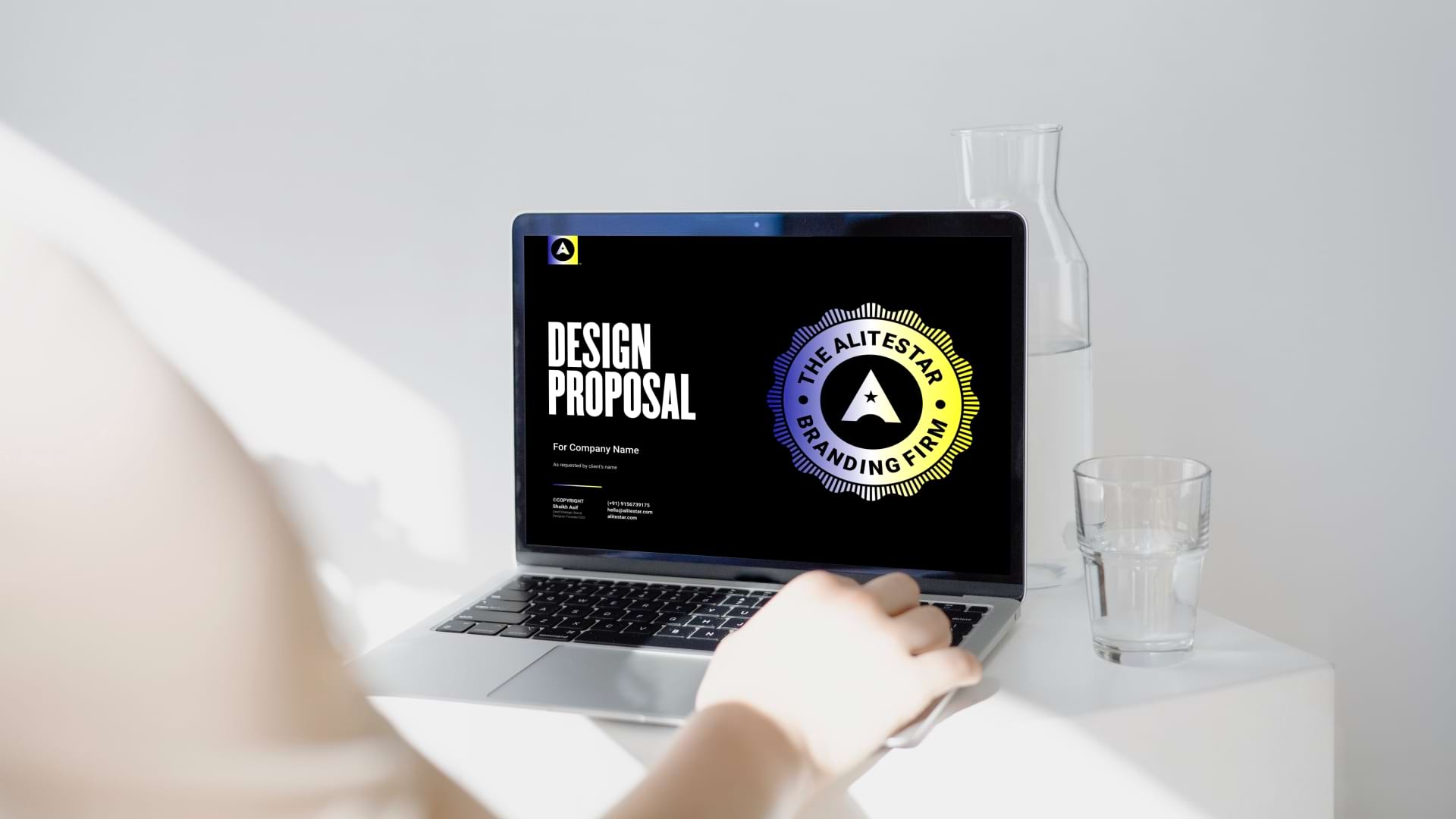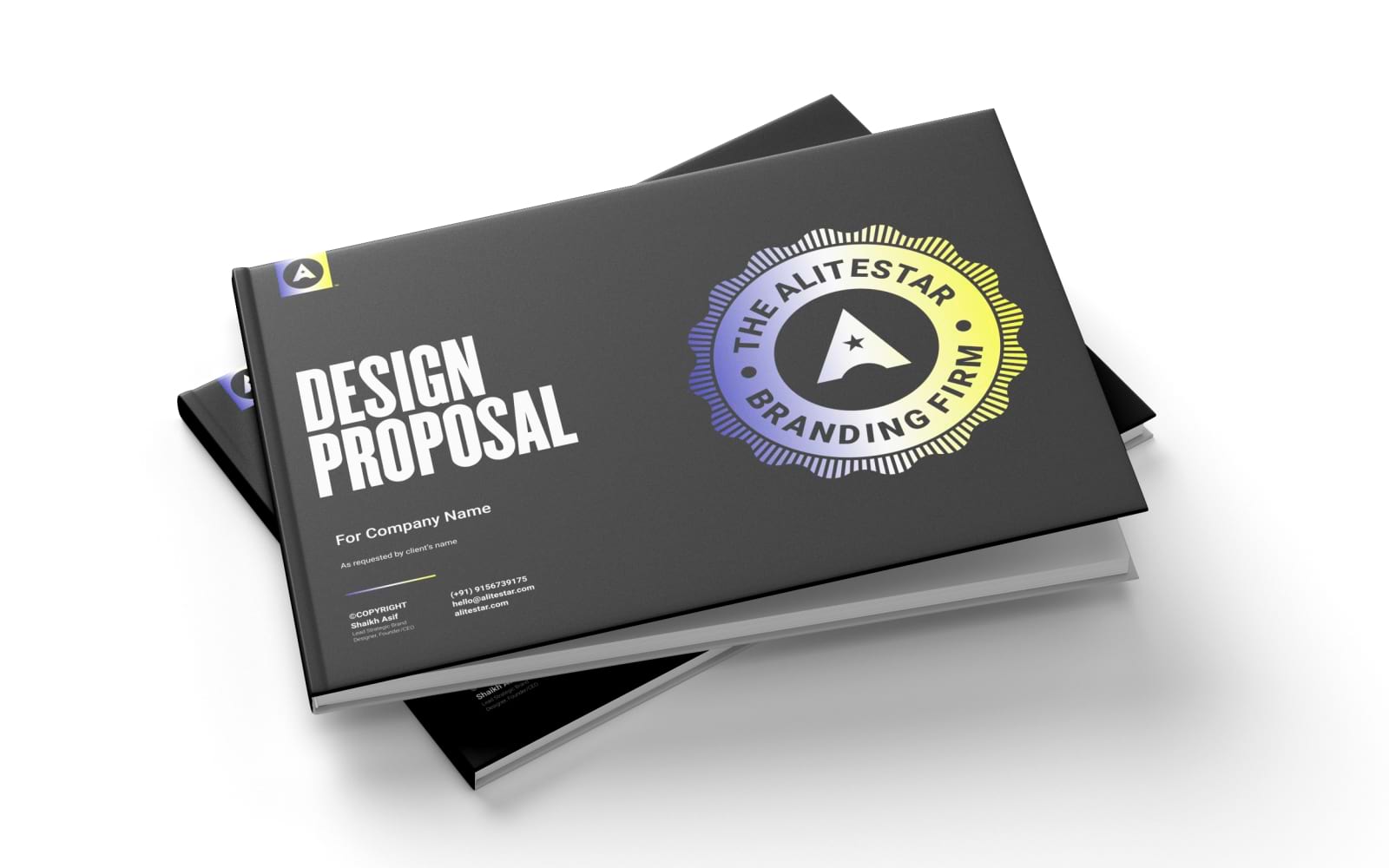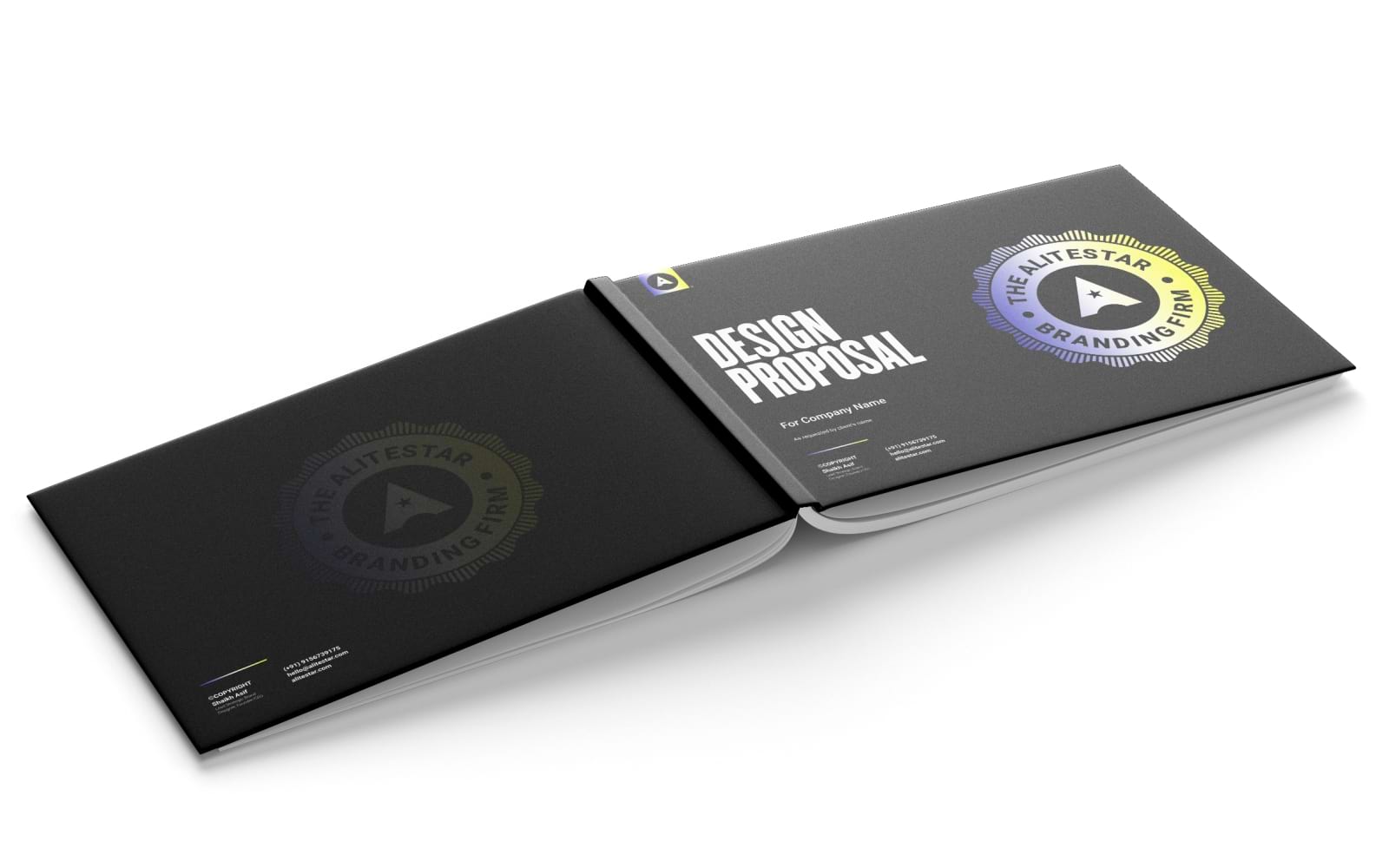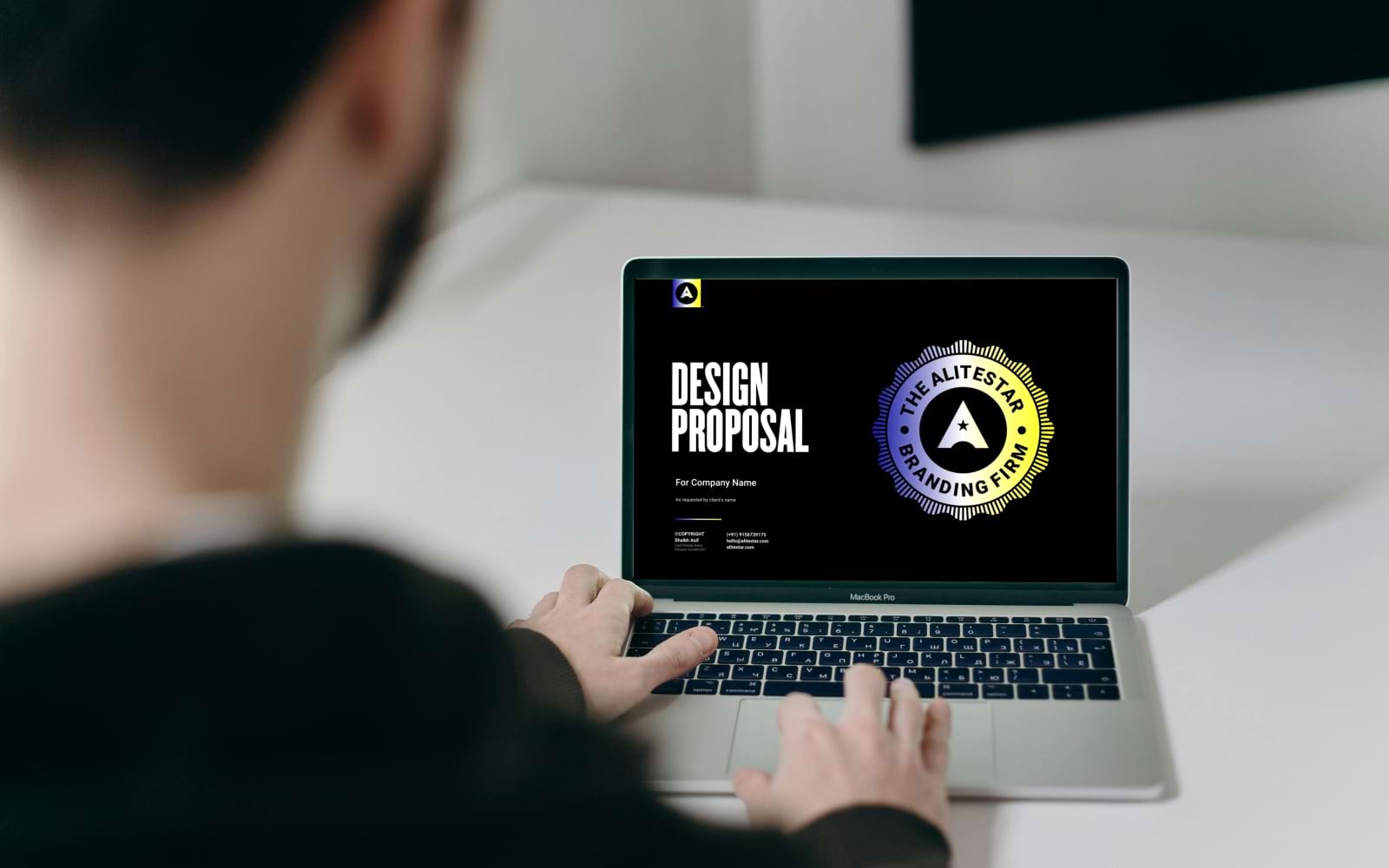Design
Mastering Design Proposals: A Strategic Guide for Securing Your Next Branding Project
10.02.2025
By shaikh asif

Design
10.02.2025
By shaikh asif
In the world of branding and design, a well-crafted design proposal can be the key to securing a project that defines your client's brand and sets your agency apart from the competition. Whether you're a startup, entrepreneur, CEO, or business leader, understanding the power of a design proposal is crucial. At Alitestar, we specialize in creating compelling branding solutions, and it all starts with the perfect proposal.
A design proposal is more than just a document—it’s a strategic tool that communicates your understanding of a client's needs, outlines the scope of work, and sets the stage for a successful project. It's your first step in establishing trust and demonstrating the value you bring to the table.
Introduction: Set the context for the project, showing that you understand the client’s challenges and goals.
Scope of Work: Detail what you will deliver, from initial concepts to final designs, including any brand strategy, brand identity, or logo design elements.
Timeline: Provide a clear project schedule with milestones.
Pricing: Present a transparent cost breakdown, ensuring there are no surprises.
Terms and Conditions: Cover the legal and contractual obligations.

The importance of a design proposal cannot be overstated. It's the blueprint of your project, ensuring that both you and your client are on the same page from the outset. A well-drafted proposal can be the difference between winning a project and losing it to a competitor.
According to a study by HubSpot, businesses that use structured proposals are 36% more likely to close deals than those that don’t. This statistic alone highlights the value of investing time in creating a detailed and professional proposal. For startups and established businesses alike, a proposal is your opportunity to convey professionalism, expertise, and a clear vision.
Clients request design proposals for several reasons, all of which revolve around gaining clarity, ensuring value, and making informed decisions. Understanding these reasons can help you craft proposals that directly address their needs and concerns.
Clarity and Alignment:
Clients want to ensure that both parties are aligned on the project's scope, timeline, and deliverables. A detailed proposal eliminates ambiguity and sets clear expectations.
Comparing Options:
Clients often seek proposals from multiple agencies to compare offerings. Your proposal is your opportunity to stand out by showcasing your unique approach and the value you bring.
Budgeting and Financial Planning:
A clear breakdown of costs helps clients understand the financial implications of the project, allowing them to budget accordingly and avoid unexpected expenses.
Risk Management:
Clients use proposals to mitigate risks by ensuring that all legal and contractual aspects are covered. This includes intellectual property rights, payment terms, and confidentiality agreements.
Establishing Trust:
A professional proposal builds trust by demonstrating that you’ve thoroughly considered the project and are committed to delivering quality work.
Timing is everything. Sending a design proposal at the right moment can significantly impact its effectiveness. Typically, you should send a proposal after an initial discovery meeting, where you've gathered enough information about the client’s needs, goals, and budget.
Steps to Follow:
Initial Contact: Have a thorough discussion to understand the client’s needs.
Research and Preparation: Gather relevant data and insights to tailor your proposal.
Proposal Delivery: Send the proposal with a personalized message, reinforcing your commitment to the project.
For example, at Alitestar, we ensure that every proposal is backed by comprehensive research and tailored to the client’s unique challenges and opportunities, which makes our proposals not just documents, but roadmaps to success.

A well-structured design proposal should cover several key areas. Here’s a breakdown of what to include:
Begin with an overview of the project, showing your understanding of the client's brand and industry.
Highlight how your services—whether it’s brand strategy, brand identity, or brand naming—will address their needs.
Detail the specific services you will provide. For example, if you're offering brand identity design, explain each phase—from research to final logo design.
Use clear and concise language to avoid any ambiguity.
Outline the project timeline, including key milestones such as the completion of brand guidelines or the delivery of brand storytelling elements.
Ensure the timeline is realistic and accounts for revisions or feedback loops.
Provide a detailed cost breakdown. Transparency here builds trust.
Include any additional costs, such as those for revisions or extended timelines, to avoid future disputes.
Cover legal aspects, such as intellectual property rights, payment terms, and confidentiality agreements.
Make sure these terms are clear and fair to both parties.
To illustrate the impact of a well-crafted design proposal, let's consider a recent project we completed at Alitestar. A startup approached us for a complete brand overhaul, including brand naming, logo design, and brand marketing.
Our proposal was meticulously detailed, covering every aspect of the project from initial concept development to final execution. The clarity and thoroughness of our proposal played a crucial role in winning the project. Not only did we secure the contract, but the client was so impressed with our professionalism that they extended the scope to include ongoing brand strategy and marketing support.
This case highlights how a detailed and well-presented proposal can lead to long-term client relationships and additional business opportunities.
While crafting a design proposal, there are several common pitfalls that can undermine your efforts:
Avoid using a one-size-fits-all template. Tailor each proposal to the client’s specific needs and industry.
Make sure every aspect of the project is covered, from deliverables to timelines and pricing.
Missing details can lead to misunderstandings and disputes later on.
After sending the proposal, follow up with the client to address any questions and demonstrate your commitment to the project.
This shows that you’re proactive and dedicated to their success.
Understand the Client’s Needs
Research the Client: Before you even begin writing your proposal, invest time in researching the client’s industry, competitors, brand, and current challenges. Understanding their pain points and goals allows you to tailor your proposal to meet their specific needs.
Ask the Right Questions: If possible, have a detailed conversation with the client to clarify their objectives, preferences, and any specific requirements. Questions about their target audience, brand identity, and desired outcomes will give you the insights needed to craft a focused proposal.
Start with a Strong Introduction
Personalize the Opening: Begin your proposal with a personalized introduction that addresses the client by name and acknowledges their specific needs. Mention how you learned about their project and why you believe your agency is the right fit.
State the Purpose: Clearly state the purpose of the proposal. This section should summarize what you aim to achieve for the client, ensuring they understand that your proposal is aligned with their goals.
Showcase Your Understanding of the Project
Project Overview: Provide a brief overview of the project as you understand it. Reiterate the client’s goals and challenges, demonstrating that you fully grasp what they are trying to achieve.
Project Scope: Clearly outline the scope of the project. Detail what you will be delivering, including specific services such as logo design, brand identity, brand strategy, and more. This helps manage expectations and prevents scope creep later on.
Present Your Proposed Solution
Detail Your Approach: Explain your process for tackling the project. For example, if you're proposing a brand identity design, describe the steps involved—such as discovery, concept development, design, and revision phases. This transparency builds trust.
Include Visuals: Where applicable, include visuals like mood boards, design mockups, or previous work examples to give the client a taste of your creative vision. Visuals can make your proposal more engaging and help the client visualize the end result.

Highlight Your Expertise and Experience
Case Studies: Include case studies or examples of past work that are relevant to the client’s industry or project type. Show how your previous projects have delivered results for similar clients, emphasizing the impact of your work.
Client Testimonials: Adding testimonials from satisfied clients can boost your credibility. Highlight positive feedback that underscores your reliability, creativity, and effectiveness.
Detail the Project Timeline
Provide a Realistic Schedule: Break down the project into phases, each with a corresponding timeline. Ensure the client understands when key deliverables will be completed. A realistic timeline shows that you’ve thought through the project thoroughly.
Include Milestones: Identify important milestones in the project where progress will be reviewed or decisions will be made. This reassures the client that the project will move forward in an organized manner.
Outline the Budget
Transparent Pricing: Clearly outline the cost of your services. Break down the budget into specific components, such as design fees, revisions, and any additional costs. This transparency helps avoid misunderstandings later.
Value Justification: Explain the value behind the pricing. Help the client understand how your services are an investment in their brand’s future success, rather than just a cost.
Define the Terms and Conditions
Contractual Terms: Include a section that outlines the terms and conditions of your engagement. This should cover aspects like payment terms, intellectual property rights, and the scope of revisions.
Next Steps: Clearly define what happens next if the client accepts your proposal. Provide instructions on how they can approve the proposal, sign the contract, and initiate the project.
Conclude with a Persuasive Closing
Restate the Value: In your closing section, restate the value that your agency will bring to the project. Reaffirm your commitment to delivering high-quality work that meets the client’s needs.
Call to Action: Encourage the client to take the next step. Whether it’s scheduling a follow-up meeting, signing the contract, or discussing the proposal further, make it clear what you want the client to do next.
Design and Present Your Proposal Professionally
Visual Appeal: Ensure your proposal is visually appealing and consistent with your brand identity. A well-designed proposal not only looks professional but also reflects your design capabilities.
Easy to Navigate: Structure your proposal so it’s easy to navigate. Use headings, bullet points, and a clear hierarchy of information to make it accessible and easy for the client to understand.
Follow Up
Prompt Follow-Up: After sending the proposal, follow up with the client to confirm they received it and to answer any questions. This shows your enthusiasm for the project and your attentiveness to the client’s needs.
Be Ready to Negotiate: Be prepared for discussions on adjustments to the proposal. Clients may want to negotiate aspects such as timeline, budget, or scope. Flexibility here can be the key to closing the deal.
A design proposal is not just a formality; it's a critical component of your branding and design process. It sets the stage for your relationship with the client, builds trust, and ensures that everyone is aligned on expectations. At Alitestar, we understand the power of a well-crafted proposal and use it to showcase our premium services, from logo design to brand strategy and beyond. Whether you're a startup looking to establish your brand or a business leader seeking to rebrand, a strong design proposal is your first step towards success. And when you’re ready to take that step, Alitestar is here to guide you with our expertise and dedication to quality.


Shaikh Asif is an Award-winning designer, director, strategist, and educator. He’s the Lead Strategic Brand Designer and Art Director of The Alitestar— a strategic branding and design agency that helps startups, ambitious CEOs, and passionate entrepreneurs to achieve success and ultimately create unforgettable brand experiences.